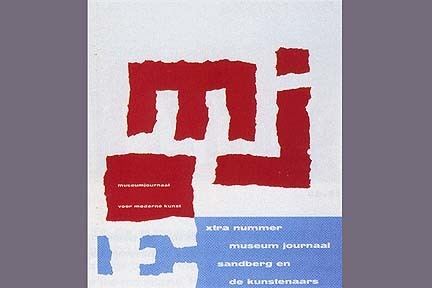Nationality Dutch Name Willem Sandberg | Awards Erasmus Prize | |
 | ||
Full Name Jonkheer Willem Jacob Henri Berend Sandberg Died April 9, 1984, Amsterdam, Netherlands | ||
THE NEW RABOTNIK [96] LENNERT BOOIJ - the next STEDELIJK head- talks with WILLEM SANDBERG -
Jonkheer Willem Jacob Henri Berend Sandberg (1897–1984) known as Willem Sandberg was a Dutch typographer, museum curator, and member of the Dutch resistance during World War II.
Contents
- THE NEW RABOTNIK 96 LENNERT BOOIJ the next STEDELIJK head talks with WILLEM SANDBERG
- So Long H N Werkman musicvideo for The Dutch
- Early life and career
- Participation in the Dutch resistance
- Contributions to the Stedelijk Museum
- References

So Long, H. N. Werkman (musicvideo for The Dutch)
Early life and career

Sandberg was born in Amersfoort, the Netherlands in 1897 and studied art in Amsterdam. He became a follower of the Mazdaznan movement. As a young man he traveled, serving as an apprentice to a printer in Herrliberg, Switzerland. In 1927, he visited Vienna, where he studied Otto Neurath's Isotype system at the Gesellschafts- und Wirtschaftsmuseum in Wien. At this time, he also visited the Dessau Bauhaus and met Naum Gabo, a pioneer of kinetic art.

Returning to Amsterdam, Sandberg started work as a graphic designer, utilizing his printing skills and Neurath's Isotype system. In 1928, he started a long relationship with the Stedelijk Museum, and in 1932 became a member of VANK, the Dutch Society for Arts and Crafts. He soon joined the committee that determined the exhibitions of the museum. From 1937 to 1941, he served as the museum's curator of modern art.
Participation in the Dutch resistance

During the Second World War, Sandberg was active in the Dutch resistance movement, preparing forged documents for Jews and others wanted by the Gestapo. Other prominent individuals in the Raad van Verzet (Resistance Council) included painter and author Willem Arondeus, sculptor Gerrit van der Veen, cellist Frieda Belinfante, and composer and conductor Jan van Gilse. Within a short time, the Nazis began to expose the false documents by comparing the names with those in the local population registry. To hinder the Nazis, on 27 March 1943, Sandberg was among those who took part in planning the bombing of the Amsterdam Public Records Office. Thousands of files were destroyed, and the attempt to compare forged documents with the registry was hindered. Arondeus and ten others were later arrested and executed by firing squad.

Sandberg spent 15 months in hiding and avoided arrest. His wife and son, however, were arrested and incarcerated for several months. For his participation in the resistance movement and helping to save the lives of Jews during the war, Sandberg was recognized as Righteous Among The Nations on 26 November 1968.
Contributions to the Stedelijk Museum
During his tenure as curator of the Stedelijk Museum, Sandberg expanded the museum and developed new exhibition techniques, for which he gained international renown. He applied his graphic design and typography skills to over 300 catalogues. Sandberg retired from his position as curator in 1962.
In his retirement, he served on the committees for the Beaubourg in Paris and the Israel Museum in Jerusalem.
Sandberg has also given his name to the master's degree's design and art school, the Sandberg Instituut in Amsterdam, established in 1997 (part of Rietveld Academie)
